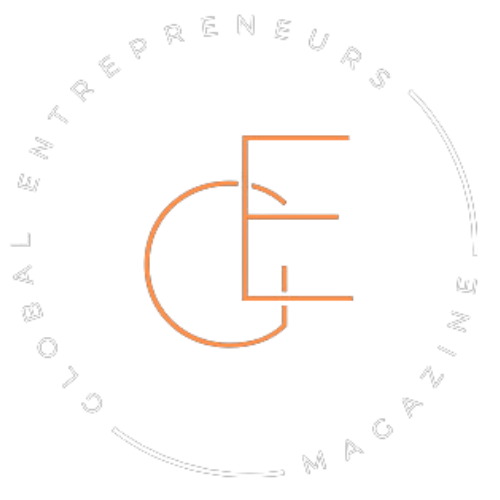Julian always knew he’d end up at the family factory.
Not because he was forced into it. Not because he had no other options. He simply grew up around the smell of engine grease and the sound of machines running—long before he ever learned to drive. His dad built the business from a one-man garage into a regional supplier of auto parts. Everyone in town knew the name printed on those faded delivery trucks. It meant something.
But sitting in his dad’s office on his first official day as managing director, Julian noticed something strange. The phone barely rang. The inbox was quiet. Their biggest client hadn’t reordered in months.
The business hadn’t collapsed—but it was coasting.
That was the moment it hit him.
If he didn’t rework how the company operated, communicated, and showed up in the world, there wouldn’t be much to pass on to the next generation. He wasn’t just inheriting a business. He was inheriting habits, assumptions, and a playbook written for a different time.
And if that playbook no longer worked?
He’d have to write his own.
Inheriting more than a business
Taking over a family business sounds like a privilege—and in many ways, it is. But for most second-generation founders, it’s rarely just a matter of grabbing the keys and stepping in.
There’s a weight to it. A history that hangs in the walls. A hundred little decisions made decades ago that still shape how things are done today.
For Maya, that meant walking into a flower distribution company that her mother started out of their garage. She admired the grit it took to grow that business. Her childhood was filled with memories of early-morning market runs and late-night bouquet assemblies on the kitchen table. But once Maya became CEO, she quickly realized she wasn’t just stepping into her mother’s shoes—she was stepping into a maze of unspoken rules.
Some employees had been around longer than she had. Vendors didn’t take her seriously at first. Her suggestions were often met with polite nods and subtle dismissals. She wasn’t just trying to keep the business alive—she was constantly having to prove that she belonged there.
This is what most people don’t see.
Second-gen founders often inherit systems that worked once, relationships built on handshakes, and a brand story that feels frozen in time. But what they also inherit—quietly, without any ceremony—is the pressure to protect a legacy while simultaneously being the one expected to change it.
It’s a tightrope few are trained to walk.
Breaking old patterns
It usually starts small. A spreadsheet that hasn’t been updated in years. A website that still looks like it’s stuck in 2008. A loyal employee who resists every new idea with, “That’s not how we do things here.”
For second-gen founders, these moments pile up. They don’t arrive with a plan to disrupt everything. But the longer they sit with the daily routines, the more they see the cracks.
Arjun found himself in that position when he took over his family’s textile export business. On paper, things looked fine. Orders were still coming in. The numbers weren’t bad. But something didn’t feel right. Lead times were slow. The sales team had no strategy beyond word of mouth. Most painfully, they were losing younger clients to flashier, more adaptive competitors.
He started asking questions no one wanted to hear.
Why are we still relying on fax for purchase orders?
Who’s tracking customer feedback?
Why hasn’t anyone reviewed our supplier contracts in a decade?
Each question poked at something sacred. But each answer pushed him to change what once felt untouchable.
Breaking patterns isn’t about disrespecting what came before. It’s about recognizing when comfort turns into complacency—and having the guts to do something about it.
Building on the bones without burning the house
Some founders scrap everything. Others preserve it all. Second-gen leaders often sit somewhere in between.
They don’t want to erase what their parents built. That legacy matters. But they also can’t pretend the old way still works in a market that’s shifted entirely.
Talia faced that exact dilemma when she stepped into her father’s artisanal coffee roasting business. The brand had a cult following, but sales were flatlining. The logo looked dated. The packaging hadn’t changed in over a decade. Her first instinct was a total rebrand. But when she floated the idea, long-time customers and even some staff pushed back—hard.
So she took a slower approach.
She updated the visuals without touching the logo.
Modernized the website but kept her dad’s original welcome note on the homepage.
Expanded into wholesale without closing the old-school storefront where regulars still came in for small talk and hand-packed beans.
She kept the heart. But changed the pacing.
There’s a kind of respect in that—in not treating legacy as a roadblock, but as the foundation. Something to build on. Something that still has stories left to tell.
Culture shift: the quiet revolution inside the walls

The hardest changes usually aren’t the ones customers see.
They’re the ones that start in break rooms, in one-on-ones, in the tiny moments where trust is either built or broken.
When Luca took over his family’s logistics firm, he expected resistance to new software and updated processes. What he didn’t expect was how much of the company’s culture had calcified. People kept their heads down. No one spoke up in meetings. There was an unspoken rule: don’t question the way things are.
He didn’t try to fix that with memos or motivational posters. Instead, he started showing up differently. He asked more questions. Listened more than he talked. Took the time to learn everyone’s name—not just their job title.
Then he started making quiet but intentional moves. Flattening the hierarchy. Giving mid-level staff a real seat at the table. Celebrating small wins publicly. Offering flexible schedules where none had existed before.
At first, it felt awkward. Like a foreign language. But slowly, people started speaking up. Sharing ideas. Caring a little more.
Culture doesn’t shift overnight. It shifts when leadership makes room for people to matter—not just their output.
Digital natives in analog empires
To some second-gen founders, technology isn’t a “strategy.” It’s just oxygen. They grew up with it. It’s how they think, how they move, how they solve problems. But introducing it into a legacy business? That’s where the challenge begins.
When Priya returned to help run her family’s specialty food company, she was shocked to find that orders were still tracked in notebooks. Inventory was estimated by eye. The only marketing was a monthly newspaper ad that hadn’t changed in years.
She didn’t mock it. She understood why it had worked. But she also knew it couldn’t keep working.
So she started small. A simple POS system to track sales in real time. Then a website. Then Instagram, where she posted behind-the-scenes photos from the kitchen and started sharing their story in ways no ad ever could.
Sales went up. So did online reviews. New customers started showing up. But so did skepticism from relatives who saw “going digital” as a gimmick.
That’s the tightrope. Bringing new tools into old spaces often feels like you’re fixing something that isn’t broken. But second-gen leaders aren’t trying to fix. They’re trying to future-proof.
And sometimes, the only way to honor what was built is to make sure it survives what’s coming.
The new rules they’re writing
Second-gen founders rarely follow a template. Even when one is handed to them, they tend to scribble in the margins, cross things out, write their own.
Not because they’re rebellious. Because the world they’re leading in doesn’t look like the one their parents built in.
Take Sam and Elise—siblings who inherited a family-owned packaging company. Instead of chasing bigger margins through cheaper materials, they doubled down on sustainability. They cut ties with long-time suppliers who couldn’t meet new environmental standards. They added transparency to every layer of their business—from sourcing to shipping—and turned that openness into a brand value.
Growth slowed at first. Then it surged.
What they learned—and what many second-gen founders are learning—is that success doesn’t have to follow the same path it did twenty years ago.
Some focus on community impact.
Some prioritize employee well-being over aggressive expansion.
Some redefine what profit even means in the context of a meaningful business.
The point isn’t to break the rules for the sake of it.
It’s to write ones that reflect their own values—and the kind of future they actually want to run toward.
Legacy isn’t a fixed script
Some inherit businesses. Others inherit blueprints.
Second-gen founders inherit expectations.
But what they do next—that’s where things get interesting.
They’re not here to preserve the past in glass. They’re not here to burn it down either. Most of them are building something in between—where the roots run deep, but the branches grow in new directions.
Legacy isn’t something you freeze in time. It’s something you keep in motion.
And the second generation? They’re not rewriting history.
They’re making sure the story keeps going.



